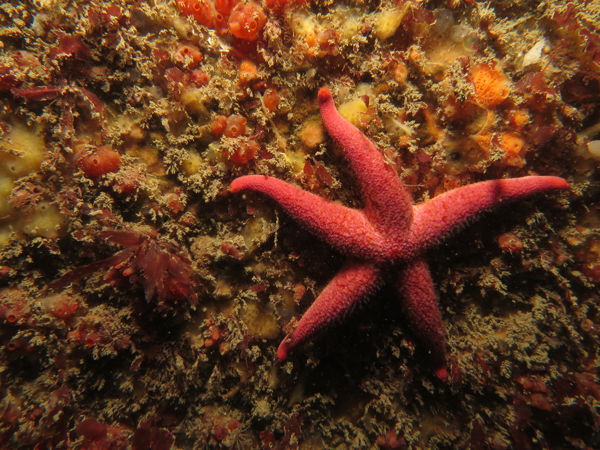Wales’ iconic Skomer marine conservation zone celebrates its 30th birthday this year

Skomer Marine conservation zone is the only one of its kind in Wales. Designated a Marine Nature Reserve in 1990, it remains a golden opportunity to study and protect the marine environment. Its waters stretch from around Skomer island to the adjacent Marloes Peninsula and is famed for its underwater scenery and amazing range of marine life.
Managed by Natural Resources Wales, Skomer marine convesrvation zone waters are 13.2 square kilometres of unique and varied habitats, thanks to its location. Situated as it is where Northern and Southern species overlap - there is a huge variety of wildlife of all shapes and colours, unlike anywhere else in Great Britain – making it a great place to study and monitor changes in the marine environment.
Phil Newman, NRW Senior Marine Environmental Assessment Officer said:
“In the 30 years since its first designation, this marine conservation site has worked with a wide range of stakeholders from the academic, commercial and recreational sectors to achieve the best outcome for marine wildlife. For many of them it has been the continuation of work they started decades before to gain recognition for the area. For others, their involvement has been more recent and, in the case of our many volunteers, even more personal as they have helped us achieve an ambitious monitoring and management programme.
“We owe a huge debt to all of them and hope to be able to honour their investment in the site by continuing the work for many years to come. With climate change and other challenges facing the marine environment, it is more important than ever that Skomer continues to flourish as a place of learning and conservation.”
Some of the highlights of the last 30 years:
- Species studies range from over 130 species of sponges to grey seals, and from tiny and colourful sea slugs to graceful, slow-growing sea fans.
- Over 130 sea fans are visited and photographed every year to study changes in them. Staff have completed 2305 individual sea fan visits.
- Over the last 30 years, scallops, which are protected from all forms of fishing within the Marine Conservation Zone, have increased at least seven-fold.
- Eelgrass, a rare and sensitive habitat which harbours a wealth of wildlife, has increased in area and density. It is protected in the MCZ by marker buoys and by providing moorings for visiting boats - eelgrass is easily damaged if anchors are dragged through it.
- 79 species of nudibranch (sea slug) have been recorded in the MCZ representing 70% of UK species. Sea slugs are specialised predators with a very selective choice of food and they are therefore a good indicator of the overall ecosystem health.
- Winds of over 110 mph and waves over 13 metres high have been measured.
- Staff have followed the fate of more than 7430 seal pups;
- Volunteer divers, working with NRW, have surveyed more than 180,040 square metres of seabed looking at scallops, fish, urchins and eel grass;
- More than 390,000 people have visited the MCZ’s exhibition at Martin’s Haven.
- More than 55,400 divers have explored the MCZ – either for pleasure or to contribute to the survey and monitoring work;
The Skomer MCZ team produces NRW marine monitoring evidence reports on all its projects, these provide evidence to support not just the management of the Skomer MCZ but also to the management of Pembrokeshire Marine Special Area of Conservation and the marine environment in Wales ‘State of the Environment’ reporting.
